Refine search
Actions for selected content:
23990 results in Ancient history
Dedication
-
- Book:
- Roman Law in the State of Nature
- Published online:
- 05 February 2015
- Print publication:
- 12 February 2015, pp v-vi
-
- Chapter
- Export citation
Chapter 1 - Natural law in historical context
-
- Book:
- Roman Law in the State of Nature
- Published online:
- 05 February 2015
- Print publication:
- 12 February 2015, pp 24-36
-
- Chapter
- Export citation
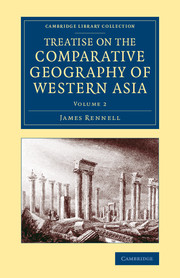
Treatise on the Comparative Geography of Western Asia
- Accompanied with an Atlas of Maps
-
- Published online:
- 05 February 2015
- Print publication:
- 13 November 2014
- First published in:
- 1831
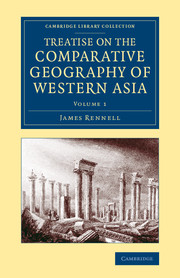
Treatise on the Comparative Geography of Western Asia
- Accompanied with an Atlas of Maps
-
- Published online:
- 05 February 2015
- Print publication:
- 13 November 2014
- First published in:
- 1831
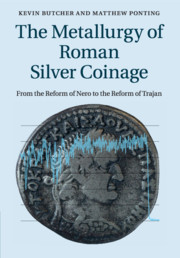
The Metallurgy of Roman Silver Coinage
- From the Reform of Nero to the Reform of Trajan
-
- Published online:
- 05 February 2015
- Print publication:
- 02 April 2015
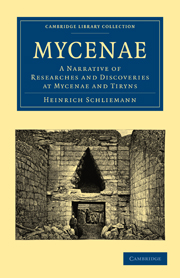
Mycenae
- A Narrative of Researches and Discoveries at Mycenae and Tiryns
-
- Published online:
- 05 February 2015
- Print publication:
- 15 July 2010
- First published in:
- 1878
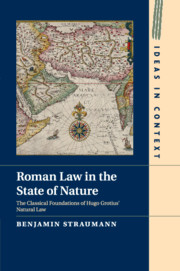
Roman Law in the State of Nature
- The Classical Foundations of Hugo Grotius' Natural Law
-
- Published online:
- 05 February 2015
- Print publication:
- 12 February 2015
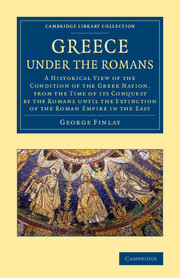
Greece under the Romans
- A Historical View of the Condition of the Greek Nation, from the Time of its Conquest by the Romans until the Extinction of the Roman Empire in the East
-
- Published online:
- 05 February 2015
- Print publication:
- 06 November 2014
- First published in:
- 1844

Roman Religion
-
- Published online:
- 05 February 2015
- Print publication:
- 16 October 2006
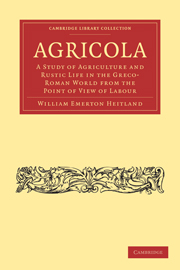
Agricola
- A Study of Agriculture and Rustic Life in the Greco-Roman World from the Point of View of Labour
-
- Published online:
- 05 February 2015
- Print publication:
- 30 June 2011
- First published in:
- 1921

Cults and Rites in Ancient Greece
- Essays on Religion and Society
-
- Published online:
- 05 February 2015
- Print publication:
- 16 October 2014

Collecting Early Christian Letters
- From the Apostle Paul to Late Antiquity
-
- Published online:
- 05 February 2015
- Print publication:
- 19 February 2015

The Cambridge Companion to Roman Law
-
- Published online:
- 05 February 2015
- Print publication:
- 16 February 2015
Illustrations
-
- Book:
- Campus Martius
- Published online:
- 18 December 2014
- Print publication:
- 19 January 2015, pp vii-x
-
- Chapter
- Export citation
Index
-
- Book:
- Campus Martius
- Published online:
- 18 December 2014
- Print publication:
- 19 January 2015, pp 235-243
-
- Chapter
- Export citation
Chapter One - “The Size of the Plain Is Remarkable”: Defining the Limits of the Campus Martius in Time and Space
-
- Book:
- Campus Martius
- Published online:
- 18 December 2014
- Print publication:
- 19 January 2015, pp 7-19
-
- Chapter
- Export citation
Maps
-
- Book:
- Campus Martius
- Published online:
- 18 December 2014
- Print publication:
- 19 January 2015, pp xiii-xxiv
-
- Chapter
- Export citation
Chapter Seven - “A Zeal for Buildings”: Reshaping of the Space by the Emperors
-
- Book:
- Campus Martius
- Published online:
- 18 December 2014
- Print publication:
- 19 January 2015, pp 138-164
-
- Chapter
- Export citation
Notes
-
- Book:
- Campus Martius
- Published online:
- 18 December 2014
- Print publication:
- 19 January 2015, pp 187-222
-
- Chapter
- Export citation
Selected Bibliography
-
- Book:
- Campus Martius
- Published online:
- 18 December 2014
- Print publication:
- 19 January 2015, pp 223-234
-
- Chapter
- Export citation
